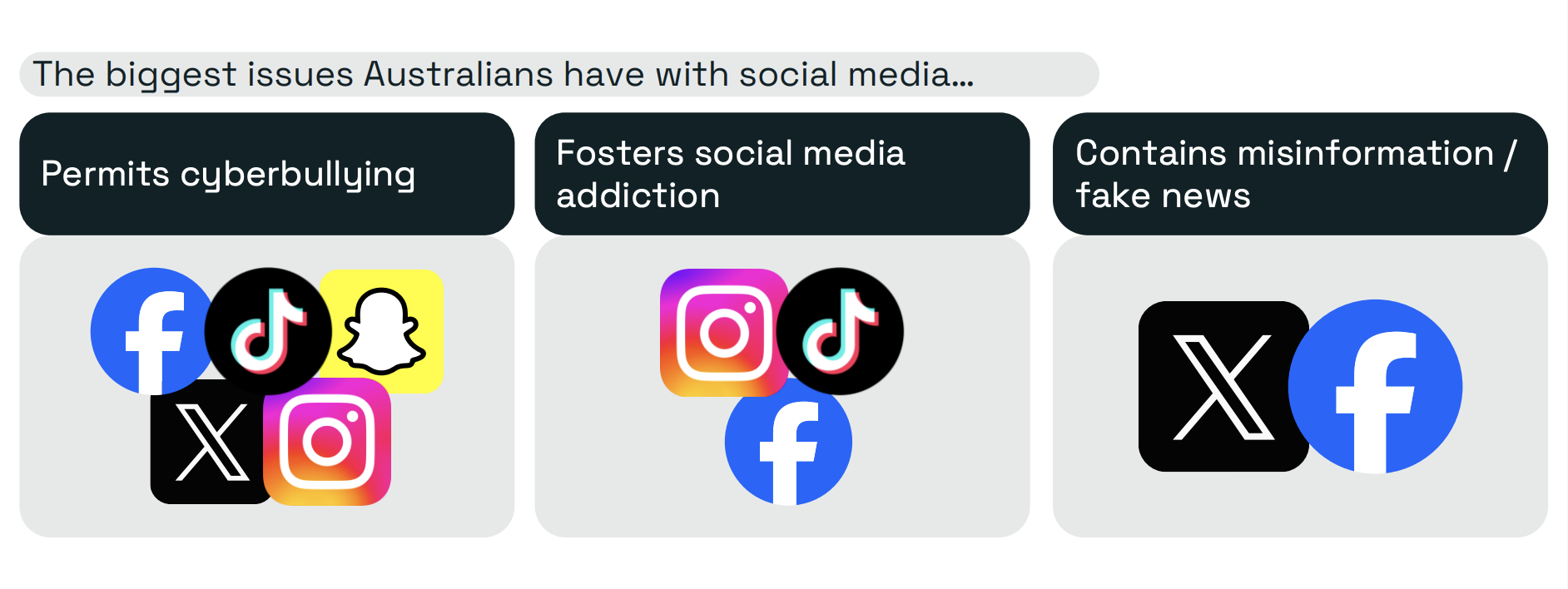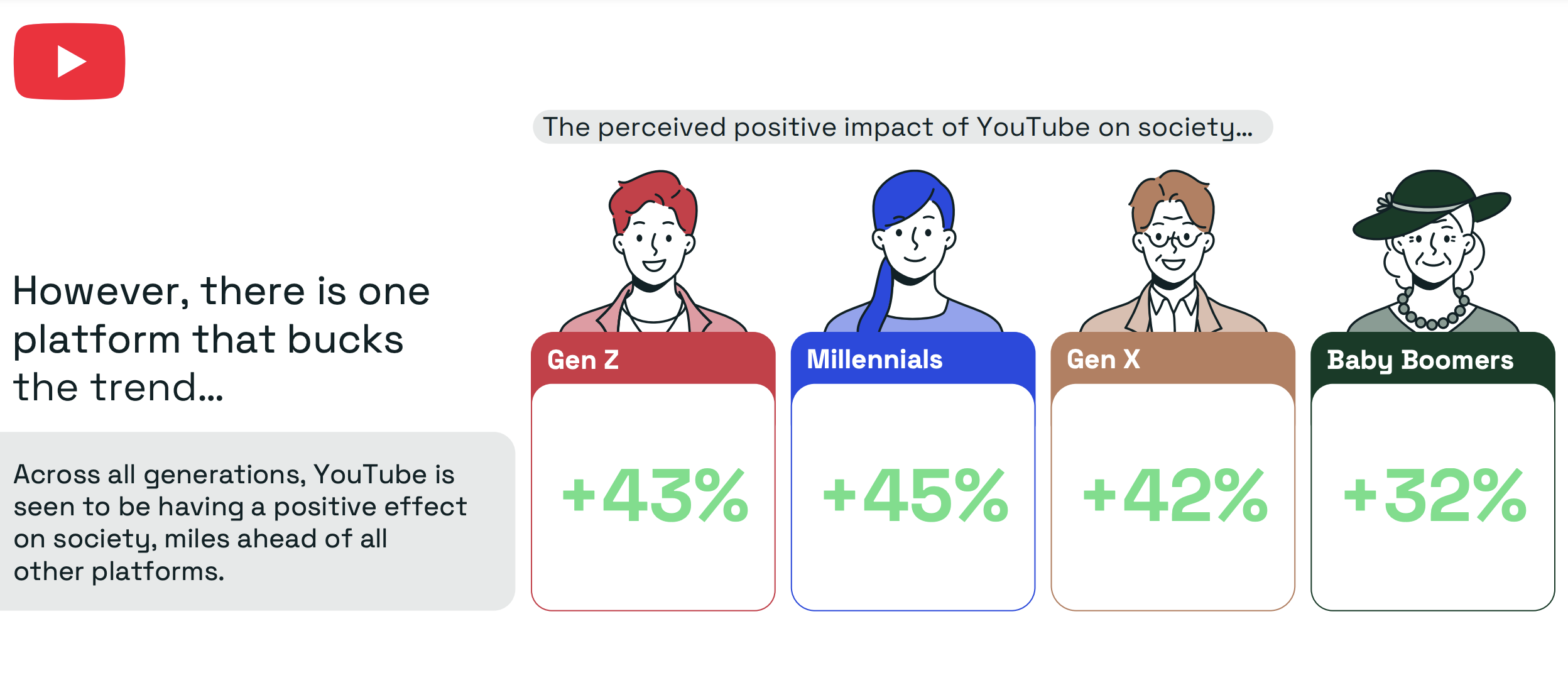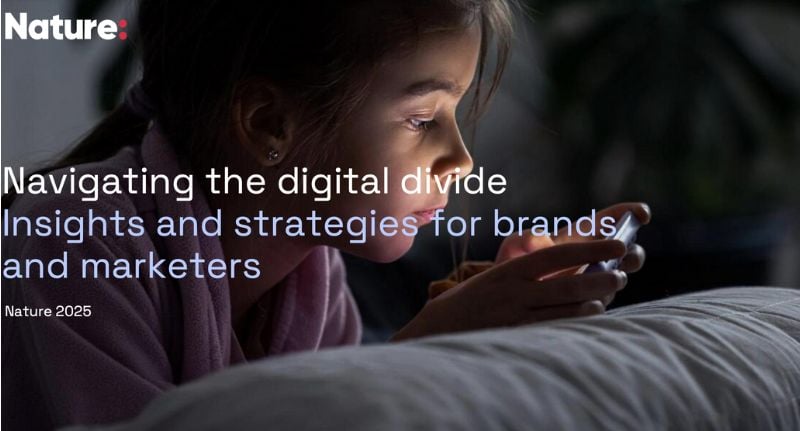A recent survey by strategic insights consultancy Nature reveals a stark generational divide regarding social media’s impact on teenagers and the federal government’s proposed ban on under-16s accessing these platforms.
While 67% of teens acknowledge social media is harming their mental health, only 44% actually support the proposed ban.
Adults, meanwhile, are overwhelmingly in favour, with 68% supporting the move. It’s a generational divide in full view: what adults view as protection, many teens see as disconnection.

Nature’s ‘Navigating the Digital Divide’ report
Bullying tops the list of issues for under-16s, with social media ranking even higher than traditional teen dangers like alcohol and drugs.
Cyberbullying, anxiety, and misinformation, especially on platforms like Facebook and X, are real concerns. But for teens, social isn’t just a hazard zone. It’s where they go to learn, create, and belong.
“The generational divide is clear: what some see as a risk, others see as a lifeline,” the report states. For teens, social media is not just a source of anxiety, but also a vital tool for connection, learning, and self-expression.
A beacon of positivity
Amidst the negativity, the report found that YouTube stands out as a platform with a positive societal impact across all generations.
“Across all generations, YouTube is seen to be having a positive effect on society, miles ahead of all other platforms,” the report notes.
Seen as an alternative to the “doom scroll” often associated with apps like Instagram, YouTube offers educational content and entertainment, attracting teens seeking meaningful engagement.

Nature’s ‘Navigating the Digital Divide’ report
Navigating a post-ban landscape: Strategies for brands
• Follow the audience to new platforms
The report predicts a surge in gaming and streaming platforms, offering new avenues for brands to reach a hyper-engaged audience. “Australian kids are gaming more than ever” it reads.
Meanwhile, the data also found that Australian children who play Roblox spend an average of 139 minutes per day engaged in the game.
Platforms like Roblox and Twitch are increasingly social, attracting major brands seeking to connect with young users.
Gaming influencers, such as Lannan “Lazarbeam” Eacott, with his massive YouTube following and in-game collaborations, demonstrate the potential of this space.
• Show up in the real world
The ban may lead to increased engagement in real-life activities, with teens expressing a desire to spend more time outdoors and playing sports.
The report found that many of the teenagers surveyed indicated they would be spending more time engaging in sports and outdoor activities.
Brands can leverage this trend by supporting community sports programs and events.
Examples like Planet Fitness’ Teen Fit Pass and the AO TopCourt’s Gen Z-focused tennis event highlight the potential for brands to connect with teens through sports and community engagement.
3. Keep communities alive beyond the algorithm
Recognising that teens rely on social media for connection, brands must address the potential for feelings of isolation in a post-ban world.
The report discovered that many teens expressed that without social media they would feel “disconnected, lonely or isolated.”
Brands can support teens by partnering with mental health organisations like Beyond Blue and facilitating offline connections.
The report suggests brands could support the transition of online communities, like BookTok, into real-world spaces.
For brands, the proposed ban signals a critical pivot point. Those looking to meaningfully engage younger audiences will need to do more than tweak their social content, they’ll need to rethink their entire strategy.
